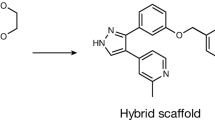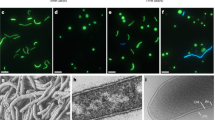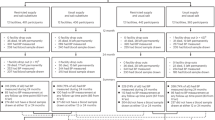Abstract
SODIUM chloride is usually added to a culture medium to make the medium isotonic, so that any blood added as an enrichment is not hæmolysed. It is conceivable that any specific requirements a non-marine bacterium might possess for the Na+ or the Cl− ion is so small it can be supplied by the culture medium itself. Thus, the addition of sodium chloride, at a concentration of 0.5 per cent (w/v), to any medium intended for the growth of non-marine bacteria seems arbitrary unless it has previously been shown to be necessary to promote optimal growth or to demonstrate some particular metabolic activity (for example, hæmolysis).
This is a preview of subscription content, access via your institution
Access options
Subscribe to this journal
Receive 51 print issues and online access
$199.00 per year
only $3.90 per issue
Buy this article
- Purchase on Springer Link
- Instant access to full article PDF
Prices may be subject to local taxes which are calculated during checkout
Similar content being viewed by others
References
Brown, A. D., and Turner, H. P., Nature, 199, 301 (1963).
Naylor, P. G. D. (unpublished observations).
Naylor, P. G. D., Nature, 202, 1361 (1964).
Wyatt, H. V., Nature, 195, 100 (1962).
Wyatt, H. V., Abst., 8, Intern. Cong. Microbiol., Montreal, Canada (1962).
Author information
Authors and Affiliations
Rights and permissions
About this article
Cite this article
NAYLOR, P. Inhibition of Growth of Aerobacter aerogenes by Sodium Chloride. Nature 205, 420–421 (1965). https://doi.org/10.1038/205420a0
Published:
Issue Date:
DOI: https://doi.org/10.1038/205420a0
This article is cited by
-
Strength of Fingernails**From the Materials Evaluation Laboratory, National Bureau of Standards, Washington, D.C. 20234.
Journal of Investigative Dermatology (1965)
-
The Antifungal Activity of Physiologic Saline in Serum**From the Department of Medicine, Division of Dermatology, University of California, The Center for the Health Sciences, Los Angeles, California 90024 and Medical Service, Veterans Administration Center, General Medical and Surgical Hospital, Los Angeles, California 90025.
Journal of Investigative Dermatology (1965)
Comments
By submitting a comment you agree to abide by our Terms and Community Guidelines. If you find something abusive or that does not comply with our terms or guidelines please flag it as inappropriate.



